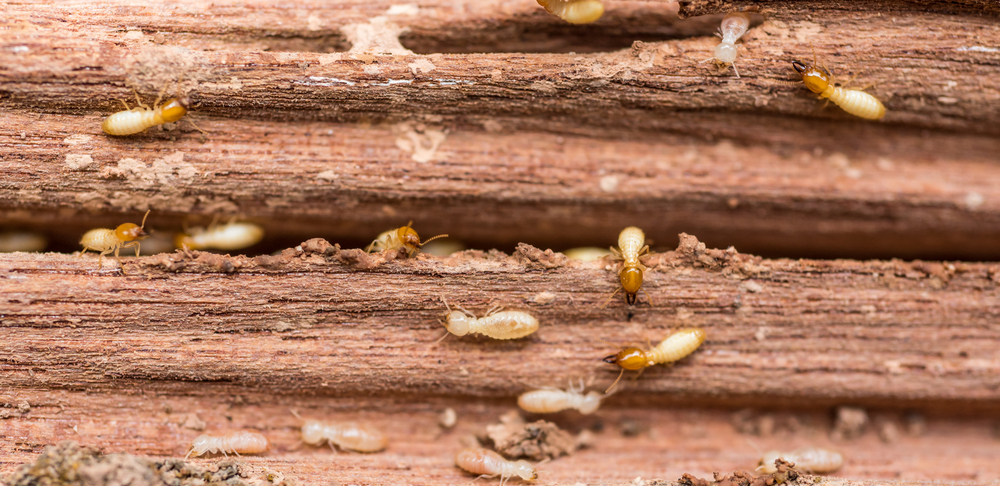Lawn & Garden

More and more people are gardening for personal enjoyment or simply as a productive way to spend time. It will definitely ruin any gardening day when termites are eating and damaging your vegetable plants. Termites are known to cause billions of dollars in damage to homes and pretty much any wooden structure. These pesky little bugs are also a problem in almost any urban space.
Termites Species and Their Habitat
Two of the most common species of termites are the eastern subterranean termite and the Formosan subterranean termite. The former is widely distributed in Alabama. The latter is more or less centered in the southern region of the state.
Termites nest below the ground, needing two things to survive; moisture and cellulose (lignocellulse). Cellulose, or lignocelluse, is the basic component of plant cell walls. Both of the termite species are capable of damaging plants, including trees and fruit trees, flowering plants, shrubs, and vegetable plants.
Why do termites show up in your garden?
High moisture levels and available feeding sources make gardens an ideal place for termites to invade. Termites will tunnel underground in search of moisture and food. They eat stems and damage the roots of vegetables and attack live trees, mainly on the bark which is usually dry and hard. They don’t eat leaves or flowers, but can sometimes invade and eat fruits.
Organic Garden Termite Control
There are common mistakes when gardeners try to kill termites on their own. Here are some termite control Do’s and Don’ts.
Do’s
Eliminate habitats where termites may nest. Remove dead or dying trees, tree-stumps, fallen logs, buried wood, landscape lumbers, woody-mulch, etc. to create an environment impossible for termites to set up camps.
Use insect-killing nematodes. Nematodes are used as a natural insecticide. They are safe to humans, un-targeted animals, and plants. Nematode products are relatively easy to use, work fast, and work until the pests are gone. Additionally, nematodes are effective to kill many soil-dwelling pest larvae and soft-body pests. To use effectively, follow the instructions on the label and the following basic steps:
- Know the soil type of your garden and buy the right nematode product. Different nematodes work best in different soils. Some nematodes work best in cultivated soil while others work best in undisturbed soils. Species of the same genus may also work differently. For example, feltiae works best in clay or silt, while S. carpocapsae works best in sandy soils.
- Apply in the early morning or when the sun is low on the horizon to avoid desiccation and UV radiation.
- Apply when soil temperatures are between 42 and 95 °F.
- Water before and after application to keep soil moist, but not to soak the area.
- Do not apply fertilizer two weeks prior or after nematodes application. High levels of nitrogen can reduce nematode efficacy.
- Use nematodes as soon as possible. If you have to store them, keep them in refrigerator for no more than two weeks.
Use bait to kill termites. Termite bait contains small amounts of insect growth regulator (IGR) that only works after termites eat it. The bait is confined in stations that can be installed in the ground around your home, garden, tree-base, or landscape. Although some baits can be purchased online doe people to use themselves, termite baiting is usually a job best suited for professionals.
Remove the soil with termites and replace it with clean soil. This may deter termites away temporarily.
Don’ts
Do not use insect spray. Insect spray won’t kill all termites and can harm beneficial insects or plants. More than 99 percent of termites are deep in the ground and travel underground from the nest to feeding sources. So, after using a spray, more termites will come back to the surface.
Using treated wood to make raised garden won’t help. Although the new pressure-treated woods are considered safe, the chemicals are leachable when wet. Vegetable plants absorb the chemicals, which will eventually make their way into the vegetables.
Removing and replacing top soil with termites does not solve the problem either. The termites seen in top soil most likely come from colonies that are deep in ground and far from your garden, so more will simply move into the garden.

